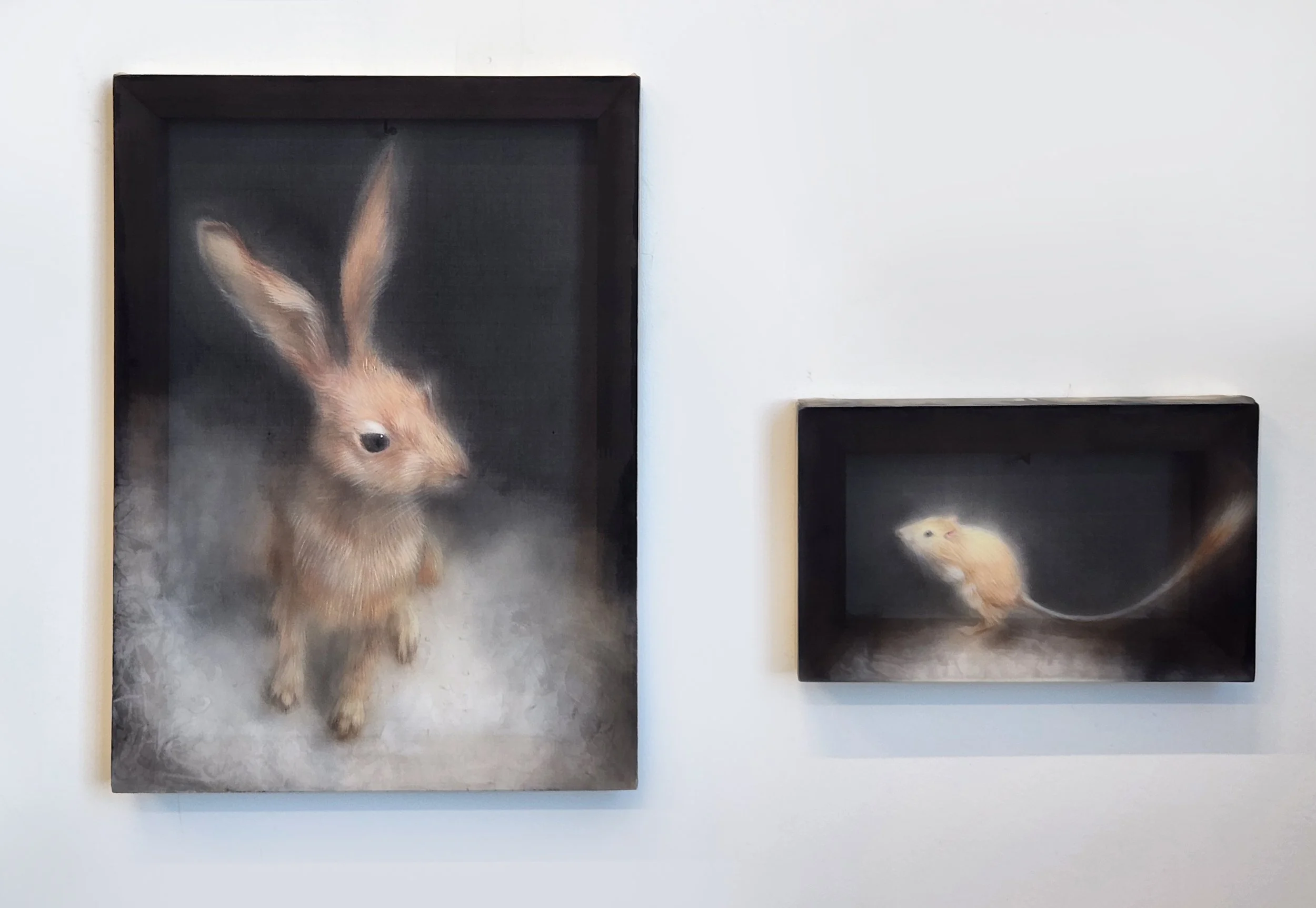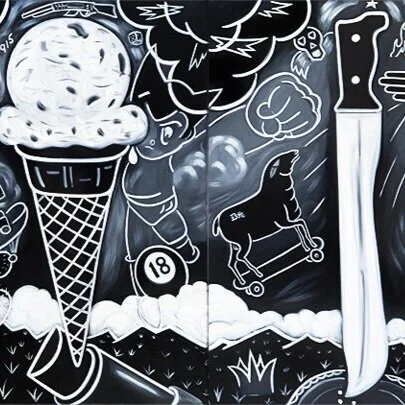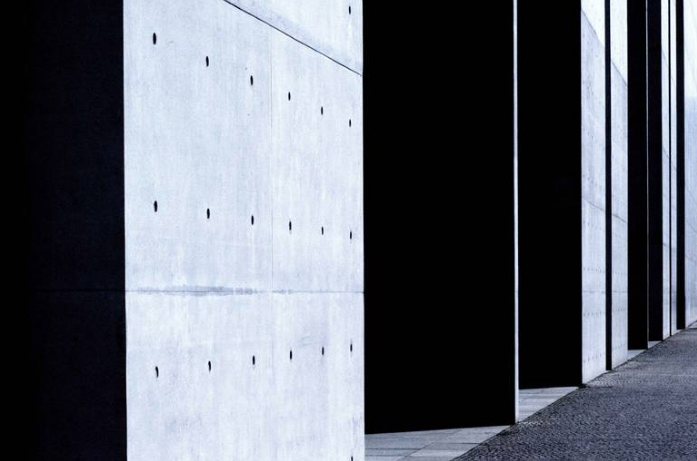Steit Slings is an artist with a passion for art, music, food, travel, and life. Born in an era when computers and digital media were still experimental, Steit explored the connection between art and technology at the Art Academy. Today, he continues to experiment with digital media, image processing, paint, 3D printing, clay, wood, and metal.
INTERVIEW | Aligmory
INTERVIEW | Raine Li
Raine Li is an interdisciplinary artist whose work explores the intersection of tradition and modernity, rooted in the vibrant heritage of China's Yi ethnic culture. With a diverse background spanning experimental animation, digital art, and traditional calligraphy, Raine's work seamlessly integrates traditional elements with contemporary expression.
INTERVIEW | Cheuk Yan Cherry Tung
Cheuk Yan Cherry Tung is a Hong Kong-born interdisciplinary artist currently based in Chicago. In her latest taxidermy painting series, Cherry endeavors to bridge Eastern and Western culture by blending the concept of European Vanitas paintings with Gongbi painting, a traditional ink painting skill that she learnt in Hong Kong. This body of work discusses the power dynamics between human beings and nature.
INTERVIEW | Zhou Song
Zhou Song is a Chinese artist, famous for his hyper-realistic oil paintings. His recent work explores the shifting political and social landscapes of urbanized societies developed according to principles of technological advancement. Imagining a dystopian future, Song’s latest series probes human realities shaped by technology as much as nature.
INTERVIEW | Evgeniia Kazarezova
Evgeniia Kazarezova is a ceramic designer based in Bratislava, Slovakia. She primarily works with clay as with one of the ancient and natural materials humans worked with. The combination of traditional techniques and modern technologies allows Evgeniia to achieve unobvious results during the design process.
INTERVIEW | Eriko Kaniwa of SENSEGRAPHIA FINE ART
Eriko Kaniwa is an international award-winning photographic digital artist based in Tokyo and the creator of Sensegraphia fine art. Sensegraphia is a conceptual redefinition of photography, in which the visual aesthetics of the photograph are used to develop and express the sense of nature that enables us to recognize that humans are a part of nature. She creates digitally enhanced abstract artwork as well as fine art photography, based on her unique philosophy.
INTERVIEW | Pei Wu
Originally from Taipei, Taiwan, Pei Wu studied architecture and art before going to the UK to study jewelry at Sir John Cass School of Art, Architecture, and Design. Having a background in architecture study, her way of working is relatively intuitive and intimate. Relative to the general perception of architecture design, her works are more organic and curved, also intentionally focused on feeling and emotional expression.
INTERVIEW | Feng Jiang
江峰 Jiang Feng performance works have been presented at various venues, including Itinerant Performance Art Festival, Movement Research at the Judson Church, "Thinking Its Presence" conference hosted by the University of Arizona, Exponential Festival, Dance Research Forum Ireland, HOT! Festival at Dixon Place, New Work Series at Tada! Theater, Gibney Dance, La MaMa Galleria, Waxworks at Triskelion Arts, BAAD!, Hudson Guild Theater, and Odyssey Dance Theater in Singapore.
INTERVIEW | Barry Wolfryd
The work investigates the exploration and exploitation of “human symbology,” the many “forms” of how we relate to ourselves and others. Wolfryd aims to “awaken minds” to fleeting governing laws by virtue of playing pictorial detective through challenging social norms. He creates a tangible environment in which the viewer challenges the perspectives about the qualities of culture and history.
INTERVIEW | JPRV
JP Racca Vammerisse, a Paris based sculptor with a passion for ceramics. He stages mixed media works masterfully, often injecting other materials such as textiles, plastic, glass, or cardboard, with a keen sense of drama. His artistic production is inspired by both popular and erudite culture. Sources range from Gothic Fantasy to Tex Avery, from gleeful reinterpretations of ornamental styles of Late Baroque architecture to artifacts of the 19th century.
INTERVIEW | Aomi Kikuchi
Aomi Kikuchi is a Japanese creator of innovative fine arts. She is inspired by Buddha’s philosophies of impermanence, insubstantiality, and suffering in all life—referred to in Japanese as Mujo(無常), Muga (無我), and Ku,(苦). She raises awareness that acceptance of impermanence and insubstantiality can liberate from dissatisfaction or suffering.
INTERVIEW | Krishna Pulkundwar
Krishna Pulkundwar deals with different artistic mediums, techniques, and processes. He believes simple is the best, but the simplest thing is the most difficult to create. His work is inspired by every sensible thought, where raw thoughts are subconscious visuals. In day to day activities, problems, attractive forms, desires, expectations, leave reflections on his mind.
INTERVIEW | Tobias Tavella
Tobias Tavella’s "Dynamic Studio Practice" examines sculpture, sound, and objects according to their space-constituting consequences. He creates new contexts of meaning where sounds, "objet trouvés" from nature, and technology are his primal spatial experience of fragility. With his temporary spatial interventions, he reflects the social framework of art and its conditions of production and representation.
INTERVIEW | Gudrun Latten
Gudrun Latten discusses aesthetic problems and questions in photographs and videos, including the image and all its qualities, reality and illusion, art-historical genres, pluralism in style, the ambiguity of signs, gender, and identity issues. His videos are figurative art and are about abstraction, digital color, and movement, visualizing abstract content with figures. He admires Surrealism above all, while the tradition of baroque still life is also essential for his pictures.
INTERVIEW | Cheryl Safren
Cheryl Safren has abandoned traditional artistic materials altogether and creates art-employing chemical processes on metal. She cannot get enough of learning about new materials. and harnesses chemistry to create art. To most artists, experimentation is an essential part of finding their voice. For Safren, the process is a central aspect of any artist’s work, but the materials usually employed do not evolve as much as the artists do.
INTERVIEW | Susana Aldanondo
Susana Aldanondo embodies in her work the joy found in the human connection, focusing on the positives through gestural abstraction, splattered and dripped paint, large and thin strokes, straight lines, and loose curvilinear forms. She creates movement and energy that stand out in her abstract paintings. She expresses a deep connection to identity and spirituality, appealing to deep feelings of connection to ourselves and others.
INTERVIEW | Maisoon Al-Saleh
Born in 1988, Emirati artist and entrepreneur Maisoon Al Saleh is active in Dubai and internationally. Her art dives below the obvious meaning residing on the surface of stories and accounts of the past. She is inspired by historic representational art. Her work brings viewers into a discussion about the importance of Emirati history and challenges how we think about history, memory and their representation in mainstream media.
INTERVIEW | Anna Snegina
Anna Snegina abstract expressionism work often includes dynamic brushstrokes as well as drips of paint. It may accurate geometric shapes and elements. Whether it’s a photo or a sculpture, it’s always the creative process that leads Anna in her art, and it’s a study of the world and introspection at the same time. She aims to inspire those who see her artwork to discover the beauty in colors, shapes, everyday objects.
INTERVIEW | Qeas Pirzad
Born in Amsterdam to Afghani parents, and studied at the Royal Academy of Art at the Hague, Qeas Pirzad learned very early in life to navigate between two opposite worlds. He uses creativity as a bridge and battles with a sense of belonging that deviates from his ancestors. Qeas Pirzad’s most recent body of work takes a critical view of the creation of personalized existence while reflecting on societal and ancestral influences.































